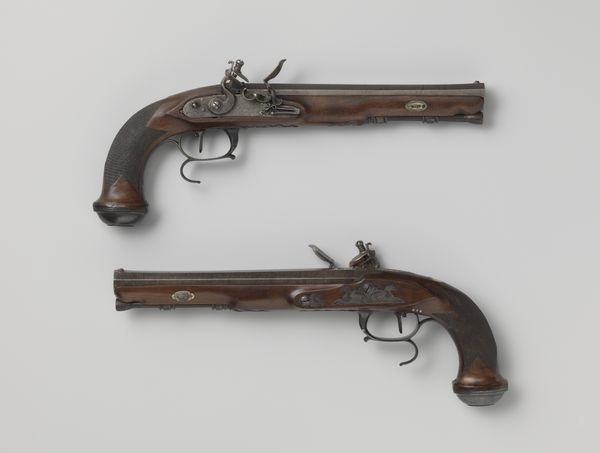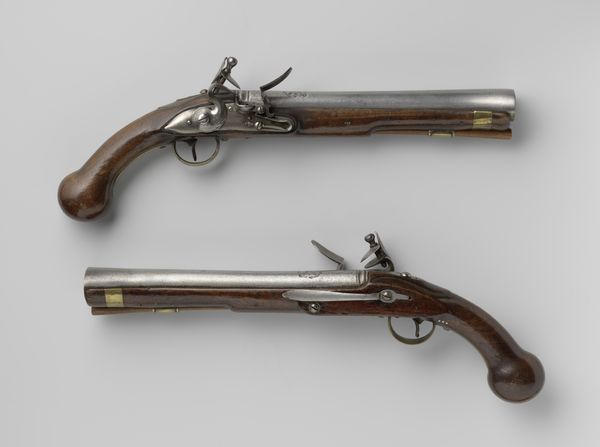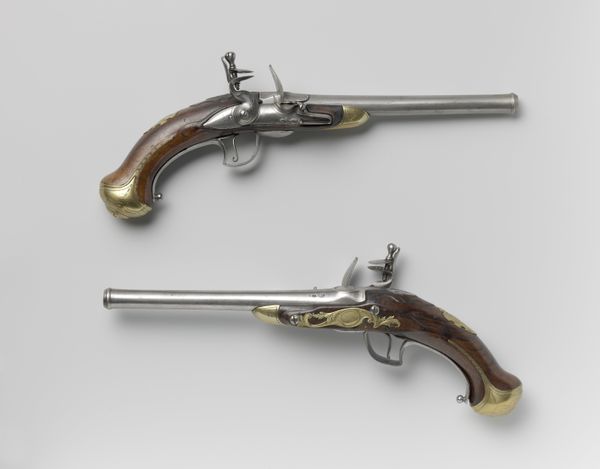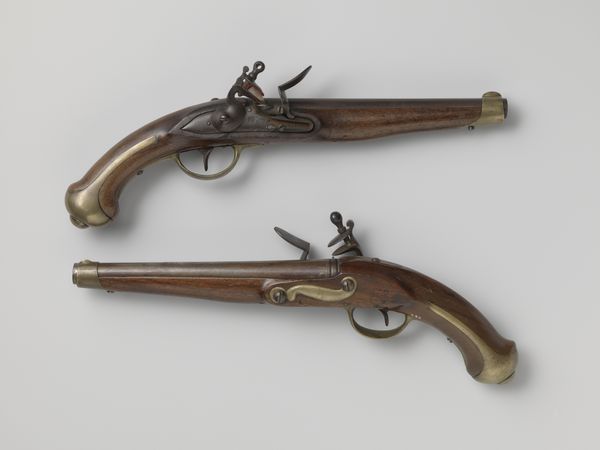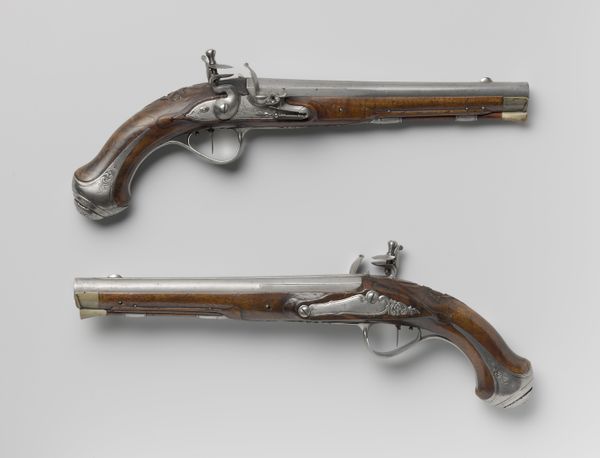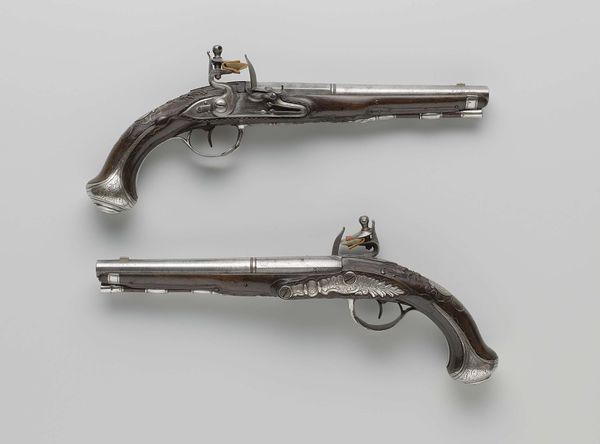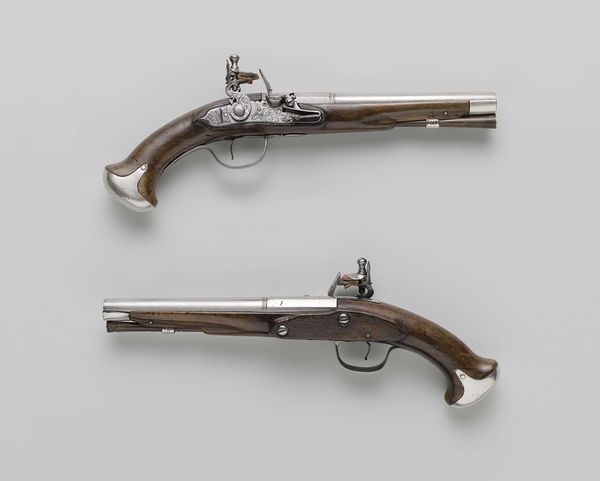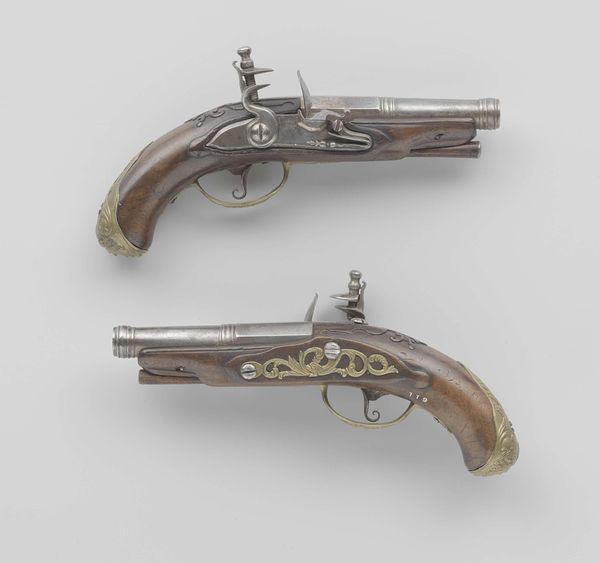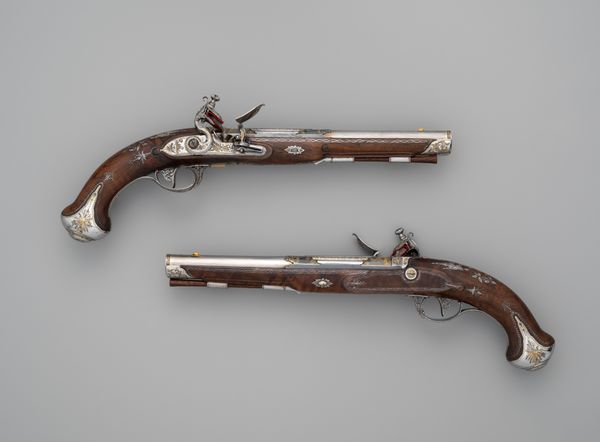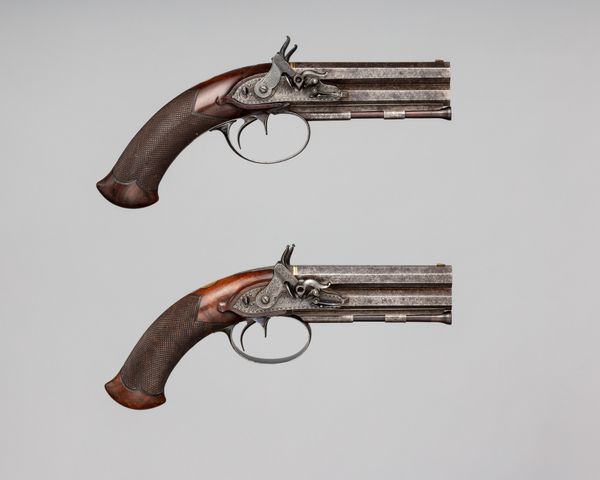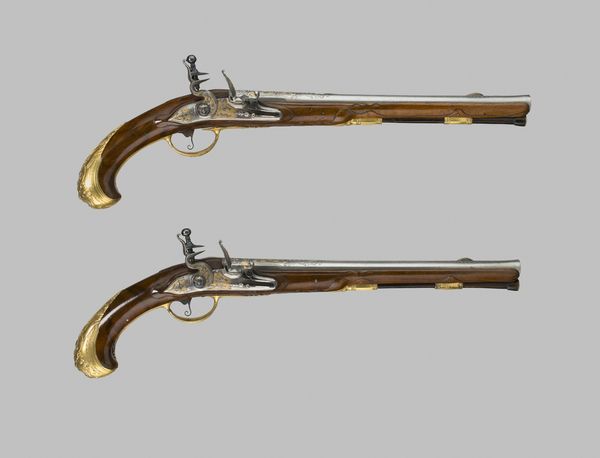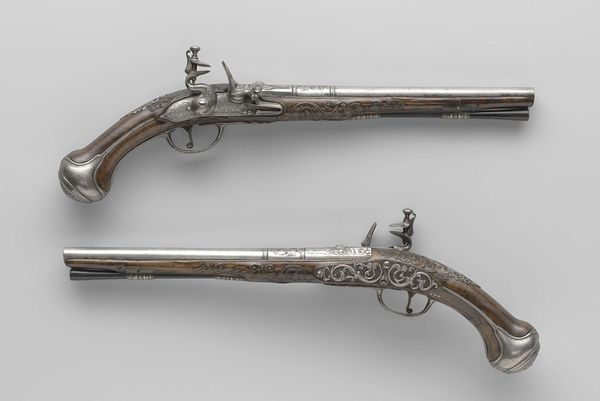
Pair of Four-Barreled Turnover Percussion Pistols of Henry Pelham Fiennes Pelham-Clinton, 4th Duke of Newcastle-under-Lyne (1785–1851), with Pair of Box-Lock Turn-Off Pocket Pistols, Case, and Accessories 1831
0:00
0:00
print, metal, wood
#
16_19th-century
# print
#
metal
#
appropriation
#
england
#
romanticism
#
wood
#
history-painting
#
armor
Dimensions: Pistols (35.41.1, .2): L. of each 12 1/4 in. (31.1 cm); L. of barrels 6 in. (15.2 cm); Cal. of barrels .54 in (13.7 mm); Wt. of each 2 lb. 9 oz. (1162.3 g); pocket pistols: (35.41.3, .4); L. of each 5 1/8 in. (13 cm); L. of barrels 1 1/2 in. (3.8 cm); Cal. of barrels .39 in (9.9 mm); Wt. of each 5 oz. (141.7 g); mallet (35.41.5): L. 8 1/16 in. (20.5 cm); Wt. 2.9 oz. (82.2 g); ramrod (35.41.6): L. 6 3/4 in. (17.1 cm); Wt. 1.5 oz. (42.5 g); cleaning rod (35.41.7a): L. 6 1/2 in. (16.5 cm); Wt. 0.9 oz. (25.5 g); cleaning tip (35.41.7b): L. 1 5/8 in. (4.1 cm); cleaning tip (35.41.7c): L. 1 1/4 in. (3.2 cm); powder flask (35.41.8): H. 4 1/2 in. (11.4 cm); W. 1 3/4 in. (4.5 cm); Wt. 3.2 oz. (90.7 g); bullet mold (35.41.9): L. 4 7/8 in. (12.4 cm); Wt. 2.2 oz. (62.4 g); bullet mold (35.41.10): L. 6 in. (15.2 cm); Wt. 3.5 oz. (99.2 g); nipple wrench (35.41.11): L. 5 in. (12.7 cm); Wt. 1.3 oz. (36.9 g); screwdriver (35.41.12): L. 5 3/8 in. (13.7 cm); Wt. 1.4 oz. (39.7 g); barrel wrench (35.41.13): L. 2 9/16 in. (6.5 cm); Wt. 0.6 oz. (17 g); patch box (35.41.14a–c): H. 1 3/4 in. (4.5 cm); Diam. 1 1/4 in. (3.2 cm); Wt. 0.8 oz. (22.7 g); case (35.41.15): H. 2 9/16 in. (6.5 cm); W. 17 9/16 in. (44.6 cm); D. 10 in. (25.4 cm); Wt. 6 lb. 2 oz. (2778.3 g)
Copyright: Public Domain
Editor: Here we have a *Pair of Four-Barreled Turnover Percussion Pistols*, crafted in 1831 by James Purdey the Elder. The use of wood and metal gives them a robust yet refined feel, almost like ornate sculptures. Given their presence in a museum, how were such functional objects elevated to art? Curator: It’s important to recognize that the categorization of “art” is a historically contingent process. Objects like these pistols, commissioned by someone like the Duke of Newcastle, speak to power and status. Were these weapons purely functional, or were they also intended to project an image of authority? Editor: I see what you mean. The pistols were a signifier of status, more than merely weapons? Curator: Exactly. Consider the context of 19th-century England. The rise of industrial production meant that such meticulously crafted objects became increasingly rare. The labor involved, the precious materials—these speak volumes about the owner's place in society. Museums often acquire and display objects that reflect important historical narratives and power structures, don't you agree? Editor: Yes, so their value transcends mere utility and gets tied into the sociopolitical landscape of the time. Did the fact that someone important owned them influence our appreciation of the object? Curator: Precisely. Provenance plays a huge role. But it's also about how we, as a society, choose to remember and represent the past. By displaying these pistols, the museum invites us to contemplate not just individual craftsmanship, but the larger historical context of wealth, power, and violence in British history. Editor: That completely changes my perspective. So, a museum isn't just preserving a physical object, but a whole story about society and power! Curator: Absolutely. Understanding art, or anything really, requires understanding its cultural and historical location. I’m glad you see my point of view!
Comments
No comments
Be the first to comment and join the conversation on the ultimate creative platform.
